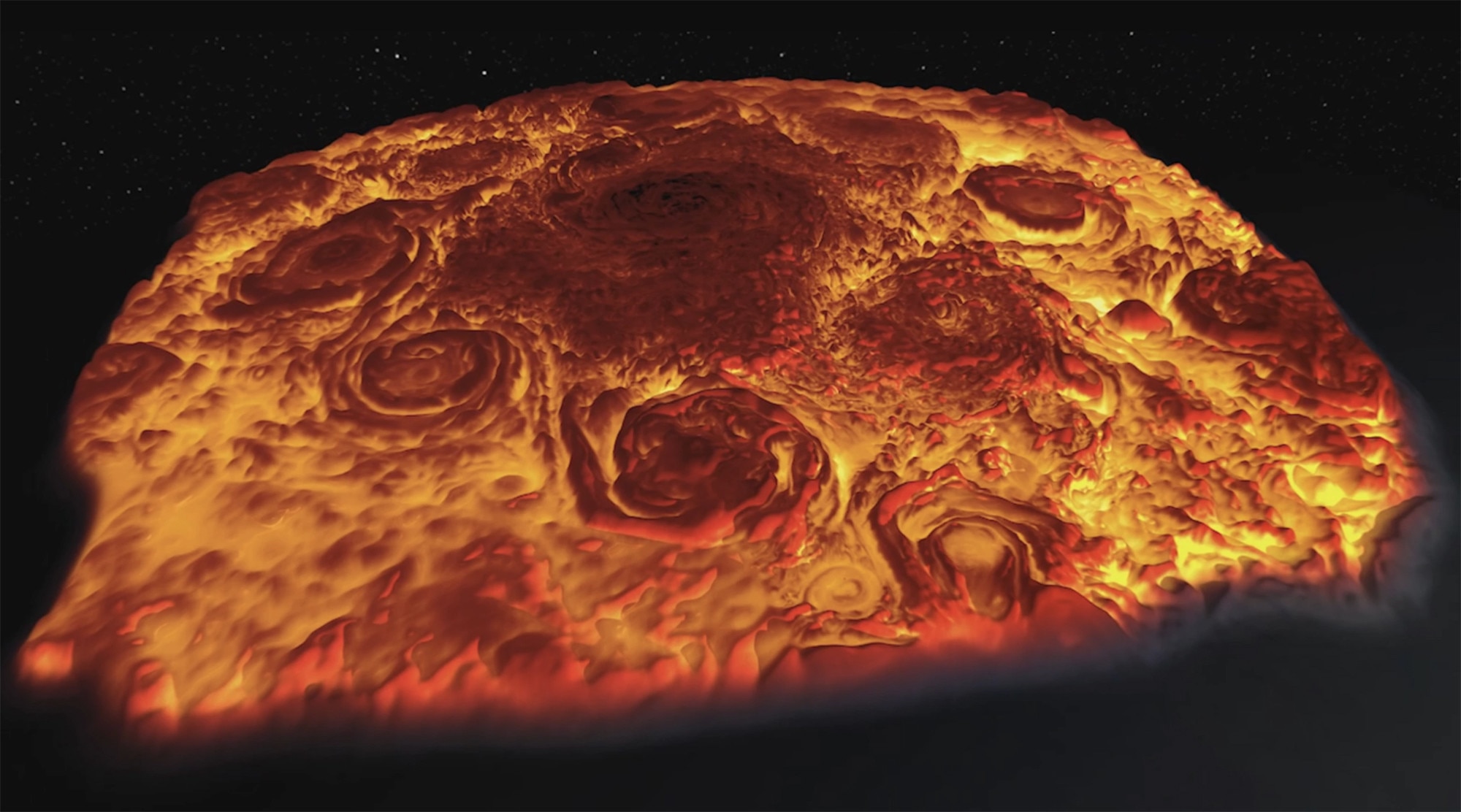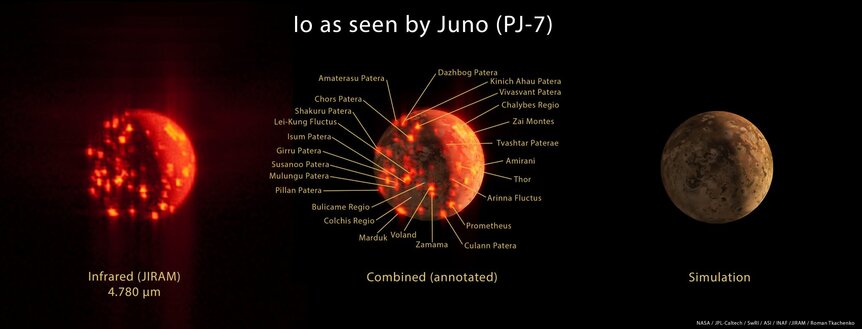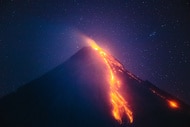Create a free profile to get unlimited access to exclusive videos, sweepstakes, and more!
Fly over Jupiter's north pole in a 3D thermal infrared tour

I recently wrote about the Juno spacecraft's stunning images of soul-crushingly enormous cyclones swirling around Jupiter's poles. The images were taken using JIRAM, the Juno InfraRed Auroral Mapper, which is sensitive to light in the far-infrared part of the spectrum. This is where in Jupiter's upper atmosphere emits light — deeper air is warmer, higher air cooler, so this allows scientists to probe different depths into the ginormous planet's atmosphere.
Juno scientists have taken that data and used the temperature of the gas as a proxy for depth, creating a 3D flyover tour of Jupiter's north pole that is as wondrous as it is deeply eerie. Watch:
I bet you didn't know Jupiter's north pole is covered in a Chicago-style deep-dish pepperoni pizza!
Before Juno arrived at Jupiter in 2016, we weren't really sure what the poles of the planet looked like. Jupiter's spin axis is only tipped about 3° to its orbit, so from Earth we're always looking at the poles at a shallow angle, and perspective from the planet's curvature distorts everything.
Juno, however, flies directly over the poles, sweeping over the north pole of Jupiter at the blood-freezing distance of 4,200 kilometers (less than 3,000 miles) — mind you, Jupiter is 140,000 kilometers wide, so this is a razor's slice from the cloud tops.
That's why these data are so important. Not only are planetary scientists seeing Jupiter from above for the first time, but they're seeing it with instruments that can map the surface and see down through the cloud tops to depths of 70 km or so. That gives them a handle on how the gases behave directly.
As cool as that is, there's something else, too. In the last pass by Juno, it happened to get Jupiter's moon Io in its sights. The images were processed by amateur astronomer and 3D artist Roman Tkachenko, and, well, take a look:
Oh. My.
Io is the most geologically active object in the solar system; Jupiter's ridiculously enormous gravity squeezes and stretches the moon, heating the interior, and causing liquid and gaseous sulfur to erupt from holes in the ground. Do you see what that means?
Every bright dot on that image is an active volcano. An eruption of sulfur magma on a moon orbiting another world.
Tkachenko labeled the volcanoes in the middle image, and provides a rendering of what Io looks like in visible light on the right.
Io is covered in volcanoes; the first was discovered by Linda Morabito while examining images taken by the Voyager 1 spacecraft in March 1979. Since then, 150 have been discovered, and there may be more than twice that many in total. Io erupts so much that over its lifetime, enough material has come from its interior to literally turn the moon inside out. That is truly one of the most bizarre things I've ever heard about our solar system.
I think about that sometimes. We had the truly incredible Cassini mission orbiting Saturn for 13 years, taking hundreds of thousands of images and other measurements that gave us unprecedented insight into that world, its rings, and moons. Juno isn't designed to be as generalized as Cassini, yet what it's showing us is still astonishing. I wonder what we'd learn if we had a Cassini-class mission orbiting Jupiter for a decade or more.
And Uranus. And Neptune. And really just every object in the solar system.
We live in a playground of wonders, a delight for our eyes and minds in every direction we look. We really should look more.















